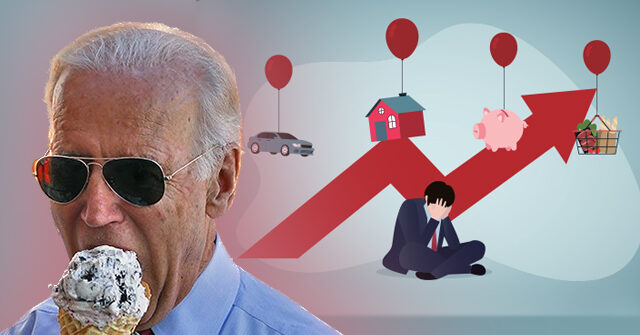
Beige Book’s Bidenflation Blahs
There is a running joke in the Breitbart virtual newsroom that some of the most interesting economic news comes out of something with the blandest name imaginable: the Beige Book. I’m not sure who the brand manager is for the Beige Book, but they should be put on the unemployment line.
The Beige Book is a report produced and published by the Federal Reserve eight times a year based on data and interviews from each of the 12 regional Fed banks. One thing that makes it especially interesting is its inclusion of qualitative information, as opposed to just quantitative, which allows for eagle-eyed readers (and investors) to spot trends in economic conditions that can’t easily be summarized in charts or graphs.
The Fed, which is not known for its marketing acumen, gave the report a lame name, but we’re always excited when we get our hands on one. And much to our delight, we got one today.
Here are key takeaways:
— “Overall economic activity expanded slightly, on balance, since late February. Ten out of twelve districts experienced either slight or modest economic growth—up from eight in the previous report, while the other two reported no changes in activity,” according to the report.
— But! A number of the districts reported that Americans are tightening up when it comes discretionary spending, which indicates a growing sensitivity to the Bidenflation.
— Some districts showed auto loan demand at a strong level, but this is not as much a sign of economic strength as it is that dealers are overloaded with inventory and are trying to offload some of it.
— Home sales increased in most districts, which suggests that more Americans are accepting that interest rates are likely to stay elevated into 2025; thus, they have little incentive to delay purchases. There is also a seasonal element to this data, as people are not as inclined to house hunt in the winter.
— Overall, prices increased modestly, but ominously the Fed specifically noted that disruptions in the Red Sea and the collapse of Baltimore’s Key Bridge were not major factors as of yet. Firms surveyed for the Beige Book indicated that they are concerned price hikes related to the port closure in particular could be delayed and might appear the next time they conduct the survey.
— One of the most troubling details that multiple firms conveyed was that, as it gets more expensive to bring goods to market, it is becoming increasingly difficult to pass cost increases onto consumers. In other words, Americans are already at their limit. So, businesses are in the position where they will likely see smaller profit margins for the next survey period, or we’re going to see accelerated inflation data. This detail gave the report an air of foreboding.
— Most districts reported an increased labor supply. Given our current (illegal) immigration levels, this is hardly a surprise. Relatedly—and more alarmingly—many districts reported a shortage of applicants for skilled labor positions. This dichotomy is bad for workers and business owners alike.
— Wage growth is at “pre-pandemic” levels, which also means pre-Bidenflation levels. Not good enough.
— Insurance rates for businesses and homeowners were up in several areas.
— Bidenomics is causing problems in the nonprofit sector.
— Bidenflation is leading to some reduction in services.
Wall Street Catches Up with Breitbart
Meanwhile, Wall Street and some in the establishment media have come to some of the conclusions we drew in yesterday’s edition of the Breitbart Business Digest, namely that we’re probably not going to see rate cuts until late summer or beyond, and the cuts might not happen this year at all.
Traders work on the floor of the New York Stock Exchange (NYSE) on April 10, 2024, in New York City. (Spencer Platt/Getty Images)
However, others in the legacy press seem intent on keeping their heads in the sand.
“What Went Wrong With US Inflation? Blame the Powell pivot, housing shortages and rising energy prices for prices staying stubbornly high,” reads the lead headline Wednesday afternoon at Bloomberg.com. Notably absent from their list of inflation’s main causes: the trillions of dollars of unnecessary government spending from Joe and the Democrats. Or, as I noted in my New York Times bestselling book Breaking Biden, “everything Joe touches gets more expensive.”
We are in a period of the election cycle when the current administration will spin any data to suggest that our economy is in a stronger position than it actually is. So, beware of that. If Team Biden were honest, however, they would acknowledge that this edition of the Beige Book provides far more red flags than silver linings.